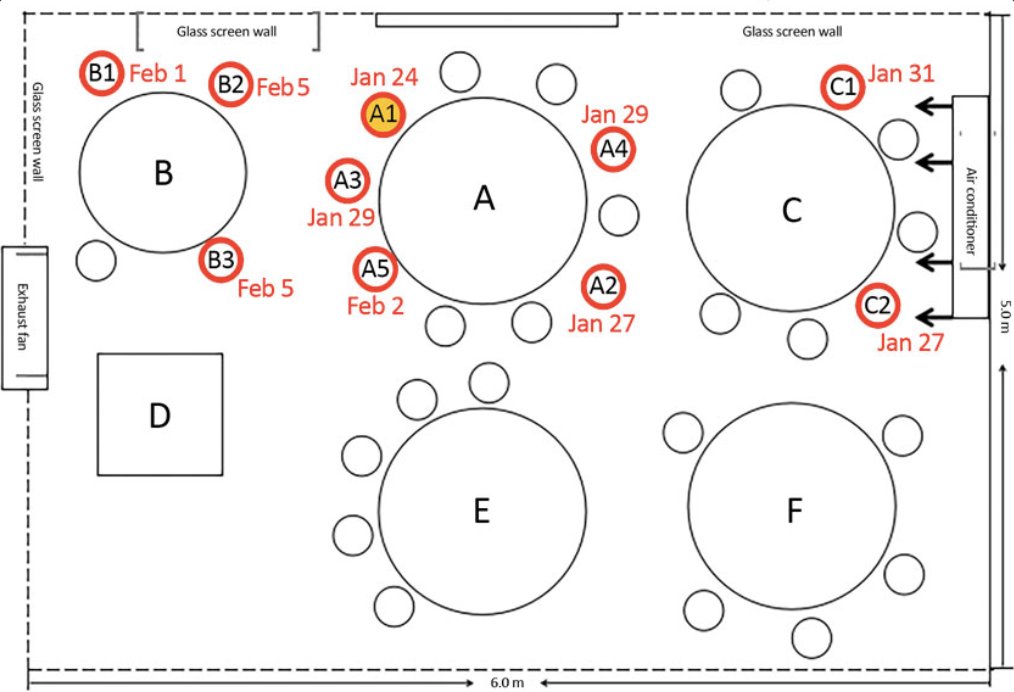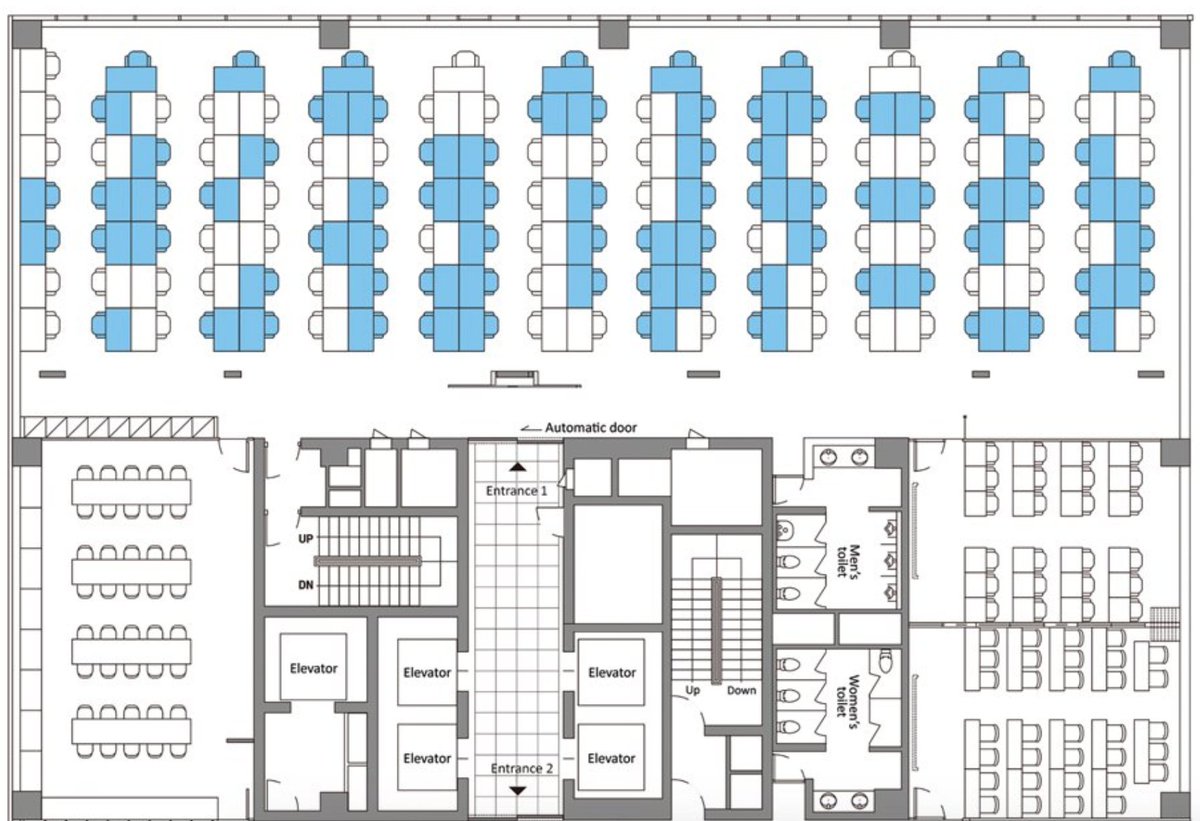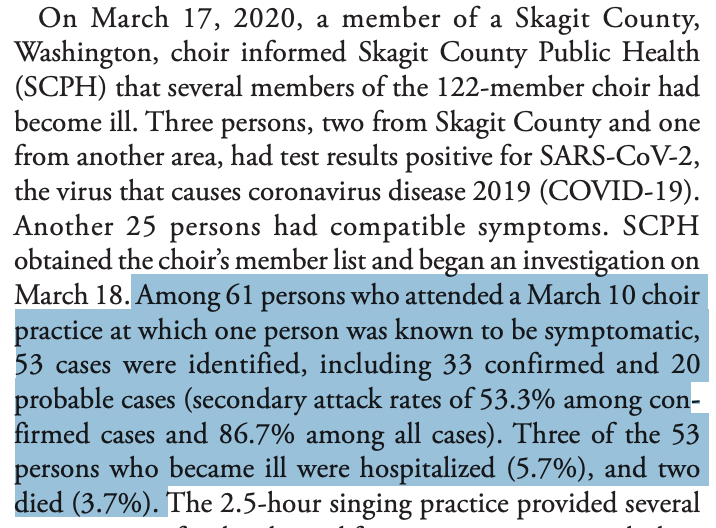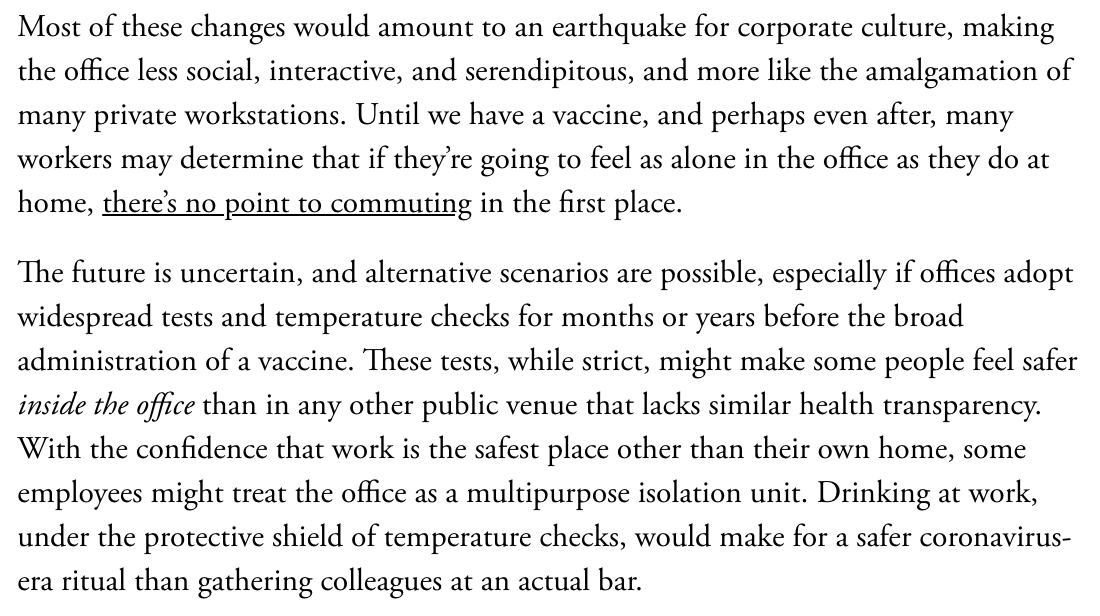I wrote about the science of COVID& #39;s indoor vs. outdoor transmission, and what it means for the future of the great indoors, including:
- offices
- restaurants and retail
- theaters
- arenas
- bars and clubs
- gyms and fitness centers https://www.theatlantic.com/ideas/archive/2020/05/how-will-we-ever-be-safe-inside/611953/">https://www.theatlantic.com/ideas/arc...
- offices
- restaurants and retail
- theaters
- arenas
- bars and clubs
- gyms and fitness centers https://www.theatlantic.com/ideas/archive/2020/05/how-will-we-ever-be-safe-inside/611953/">https://www.theatlantic.com/ideas/arc...
Before we get into the findings, your COVID caveat emptor:
There is so much we don’t know about how this disease spreads and what conditions facilitate its transmission. The studies in this article aren& #39;t outliers. But the science here is far from settled.
Okay, let& #39;s go...
There is so much we don’t know about how this disease spreads and what conditions facilitate its transmission. The studies in this article aren& #39;t outliers. But the science here is far from settled.
Okay, let& #39;s go...
The indoors are riskier—full stop.
A Hong Kong survey reviewing 7,324 cases in China found “1 outdoor outbreak."
https://www.medrxiv.org/content/10.1101/2020.04.04.20053058v1.full.pdf
A">https://www.medrxiv.org/content/1... Japanese study estimated odds of indoor transmission to be “18.7X greater" than open-air environments
https://www.medrxiv.org/content/10.1101/2020.02.28.20029272v2.full.pdf">https://www.medrxiv.org/content/1...
A Hong Kong survey reviewing 7,324 cases in China found “1 outdoor outbreak."
https://www.medrxiv.org/content/10.1101/2020.04.04.20053058v1.full.pdf
A">https://www.medrxiv.org/content/1... Japanese study estimated odds of indoor transmission to be “18.7X greater" than open-air environments
https://www.medrxiv.org/content/10.1101/2020.02.28.20029272v2.full.pdf">https://www.medrxiv.org/content/1...
The case studies bear this out.
Here is the famous Guangzhou restaurant study:
https://wwwnc.cdc.gov/eid/article/26/7/20-0764_article
Finding:">https://wwwnc.cdc.gov/eid/artic... 9 ppl sitting in AC airflow path get sick from droplet transmission
What it means: Increase table distancing, increase ventilation, maybe move diners outside
Here is the famous Guangzhou restaurant study:
https://wwwnc.cdc.gov/eid/article/26/7/20-0764_article
Finding:">https://wwwnc.cdc.gov/eid/artic... 9 ppl sitting in AC airflow path get sick from droplet transmission
What it means: Increase table distancing, increase ventilation, maybe move diners outside
A Korean call center investigation holds similar lessons
https://www.cdc.gov/mmwr/volumes/69/wr/pdfs/mm6919e6-H.pdf
Finding:">https://www.cdc.gov/mmwr/volu... call center outbreak in tall building with shared elevators is OVERWHELMINGLY concentrated in an 11th floor phone bank
What it means: Shared air is riskier than shared surfaces
https://www.cdc.gov/mmwr/volumes/69/wr/pdfs/mm6919e6-H.pdf
Finding:">https://www.cdc.gov/mmwr/volu... call center outbreak in tall building with shared elevators is OVERWHELMINGLY concentrated in an 11th floor phone bank
What it means: Shared air is riskier than shared surfaces
Backing up: These single-event studies aren& #39;t gospel. But their lessons are illustrative.
Just yesterday, CDC announced the virus "does not spread easily" from touching surfaces or objects, but mainly spreads from person-to-person, through respiratory droplets.
Just yesterday, CDC announced the virus "does not spread easily" from touching surfaces or objects, but mainly spreads from person-to-person, through respiratory droplets.
Last case-study: The WA choir outbreak
https://cdc.gov/mmwr/volumes/69/wr/pdfs/mm6919e6-H.pdf?deliveryName=USCDC_921-DM28169
Finding:">https://cdc.gov/mmwr/volu... Long choir practice w/ 61 ppl leads to 53 probable cases—attack rate of 87%(!)
Implication: It’s not just the space—it’s the spit. Risk is augmented by “super-emitters,” including loud talkers and singers
https://cdc.gov/mmwr/volumes/69/wr/pdfs/mm6919e6-H.pdf?deliveryName=USCDC_921-DM28169
Finding:">https://cdc.gov/mmwr/volu... Long choir practice w/ 61 ppl leads to 53 probable cases—attack rate of 87%(!)
Implication: It’s not just the space—it’s the spit. Risk is augmented by “super-emitters,” including loud talkers and singers
So what do these studies tell us about how public indoor spaces will change before a vaccine is available?
Here are two alternate futures for offices, restaurants, and theaters. https://www.theatlantic.com/ideas/archive/2020/05/how-will-we-ever-be-safe-inside/611953/">https://www.theatlantic.com/ideas/arc...
Here are two alternate futures for offices, restaurants, and theaters. https://www.theatlantic.com/ideas/archive/2020/05/how-will-we-ever-be-safe-inside/611953/">https://www.theatlantic.com/ideas/arc...
Alternate futures for the office:
- Door 1: Socially distanced work stations, bans on big long meetings, and masked encounters make offices even more awkward than they already are, accelerating remote work
- Door 2: Offices with temp checks and tests become trusted third spaces
- Door 1: Socially distanced work stations, bans on big long meetings, and masked encounters make offices even more awkward than they already are, accelerating remote work
- Door 2: Offices with temp checks and tests become trusted third spaces
Alternate futures for restaurants:
- Door 1: Dine-in service moves outside and ppl love the al fresco dining experience, which also cuts down on car culture
- Door 2: Weather exists, so outdoor dining isn’t a complete solution. Indoor dining is a chore not worth the risk.
- Door 1: Dine-in service moves outside and ppl love the al fresco dining experience, which also cuts down on car culture
- Door 2: Weather exists, so outdoor dining isn’t a complete solution. Indoor dining is a chore not worth the risk.
Alternate futures for theaters:
- Door 1: Social distanced seating, staggered admissions, at at-seat concessions (less crowding) preserves some shows, but ticket $$ rise and production $$ falls.
- Door 2: Singing is deemed an intolerable risk. Musicals are canceled.
- Door 1: Social distanced seating, staggered admissions, at at-seat concessions (less crowding) preserves some shows, but ticket $$ rise and production $$ falls.
- Door 2: Singing is deemed an intolerable risk. Musicals are canceled.
My best attempt to synthesize these studies and my conversations with scientists, healthy building experts, and business people is:
This is going to be a marathon. Be S.A.F.E.
https://www.theatlantic.com/ideas/archive/2020/05/how-will-we-ever-be-safe-inside/611953/">https://www.theatlantic.com/ideas/arc...
This is going to be a marathon. Be S.A.F.E.
https://www.theatlantic.com/ideas/archive/2020/05/how-will-we-ever-be-safe-inside/611953/">https://www.theatlantic.com/ideas/arc...

 Read on Twitter
Read on Twitter









